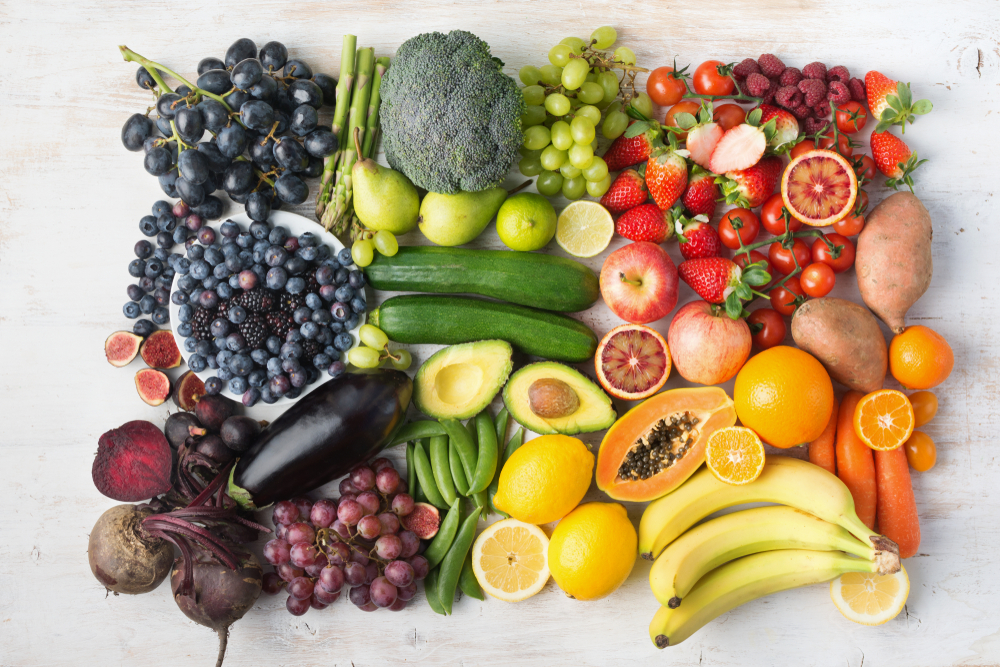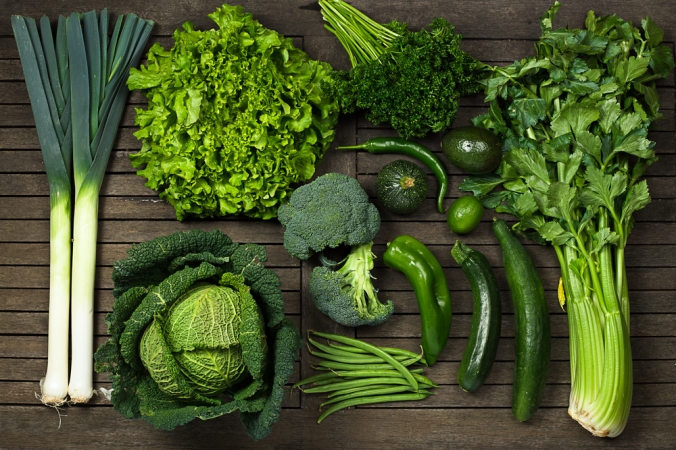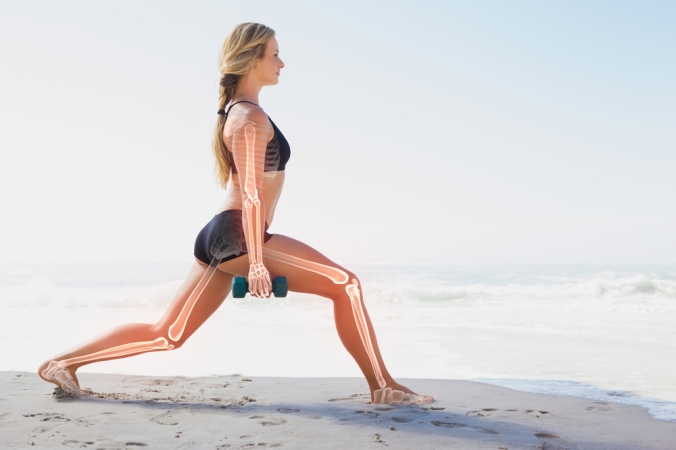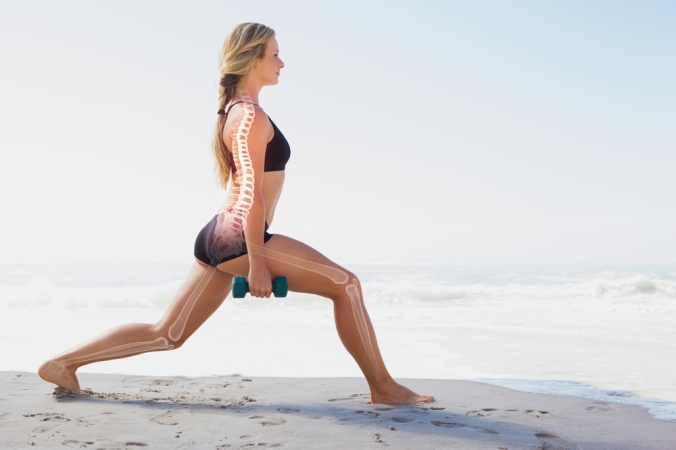
A lovely smile can light up the room! But what if your teeth aren’t as lovely as you would like? Having healthy teeth and gums is very important for overall health and can sometimes be neglected.
This National Smile Month, Clinical Nutritionist Suzie Sawyer shares five top tips for getting a smile to be proud of!
Have a healthy gut
Whilst daily brushing is essential for healthy teeth and gums, it’s just as important to look after your nutrition, and especially your gut health.
The good bacteria in our gut needs to outweigh the bad bacteria in the mouth that can be the cause of issues with our teeth and gums. As an example, the bacterium that causes peptic ulcers and the H. pylori infection actually lives in the mouth.

Feeding the good guys in the gut, especially with live natural yoghurt, can really help crowd out the bad guys. Additionally, any fermented foods are great including tofu, tempeh, kombucha and sauerkraut.
Nutrition is key
As with everything in the body, good nutrition underpins health, and teeth need ‘feeding’ with the right nutrients. Top of the list are vitamin D and calcium; both essential to building and protecting healthy teeth. Whilst most of this is done during childhood development years, just like bones, the teeth need feeding from within throughout life.

Vitamin D deficiency is still widespread in the UK as it’s not easy to obtain from food. Therefore, supplementation with a minimum of 10 micrograms daily, is needed throughout the year, even through the summer months. However, some foods that are rich in calcium like oily fish with bones (sardines) also contain some vitamin D. Other great sources of calcium are dairy, calcium-enriched plant milks, green leafy vegetables and nuts and seeds.
Keep it colourful
Compounds in fruits and vegetables, called flavonoids, have been found to target the bacteria that cause tooth decay. This means including lots of colourful fruits and vegetables into the daily diet will certainly benefit your oral health. Top of the list are dark cherries, prunes, blueberries, raisins, and blackcurrants, but all fruits and vegetables are going to deliver benefits.

Another great reason for eating lots of fruits and veggies is that they’re all high in vitamin C which helps build strong blood capillaries, supports the immune system, and helps protects gum health.
Iron is another key nutrient for gum health which is not only rich in meat but found in dark, green leafy veg too.
CoQ10 is great for oral health
Fully named coenzyme Q10, it’s literally our spark plug as it’s found in every body cell, within the mitochondria, where energy is produced. Whilst we naturally make CoQ10, production reduces with age (which may explain one of the reasons why our energy levels decrease as we get older), and it’s very important for oral health.
 CoQ10 is one of our key antioxidants, so it’s needed for the immune system and also for keeping bad bacteria in the mouth at bay. Interestingly, there is also a connection between gum disease and heart disease, hence another reason for really looking after oral health. It’s also the reason that CoQ10 is often taken as a supplement. If your dentist has noted some declining gum health, then it might be worth considering taking a supplement of CoQ10. It should also help energy levels.
CoQ10 is one of our key antioxidants, so it’s needed for the immune system and also for keeping bad bacteria in the mouth at bay. Interestingly, there is also a connection between gum disease and heart disease, hence another reason for really looking after oral health. It’s also the reason that CoQ10 is often taken as a supplement. If your dentist has noted some declining gum health, then it might be worth considering taking a supplement of CoQ10. It should also help energy levels.
Keep them clean!
It may sound obvious, but it’s essential to be fastidious with your brushing routine; it’s surprisingly common for this to be overlooked! Regular visits to the hygienist will help flag if your brushing routine is not up to scratch and will also encourage the use of small brushes to clean in between the teeth and protect the gums too. Your teeth should feel very smooth as you run your tongue over them.

If you haven’t already invested in one, an electric toothbrush is certainly your friend in this respect, enabling a much more thorough clean than using a manual toothbrush. And don’t forget flossing and using a mouthwash too.
Good teeth and gum care is important not just to feel great about smiling but for overall good health.
So, keep on smiling with these top tips to keep your oral health in tip top condition!
FOR MORE GREAT NUTRITION AND LIFESTYLE ADVICE:
Sign up to receive our blog and get a weekly dose of the latest nutrition, health and wellness advice direct to your inbox.
Follow us on Instagram @feelaliveuk for nutrition, lifestyle and well-being tips.
Visit us at www.feelaliveuk.com for the latest offers and exclusive Alive! content.
Follow and Chat with Suzie on Twitter @nutritionsuzie
For everything you need to know about vitamins, minerals and herbs visit our sister site Herbfacts
All images: Shutterstock



 Countries located in the Northern Hemisphere who lack sunshine, such as the UK, all have populations that are equally deficient. And, whilst a sunny holiday can certainly boost levels, because the body can store it, high factor sun cream can block its absorption and we simply don’t get enough Vitamin D throughout the year.
Countries located in the Northern Hemisphere who lack sunshine, such as the UK, all have populations that are equally deficient. And, whilst a sunny holiday can certainly boost levels, because the body can store it, high factor sun cream can block its absorption and we simply don’t get enough Vitamin D throughout the year.























































